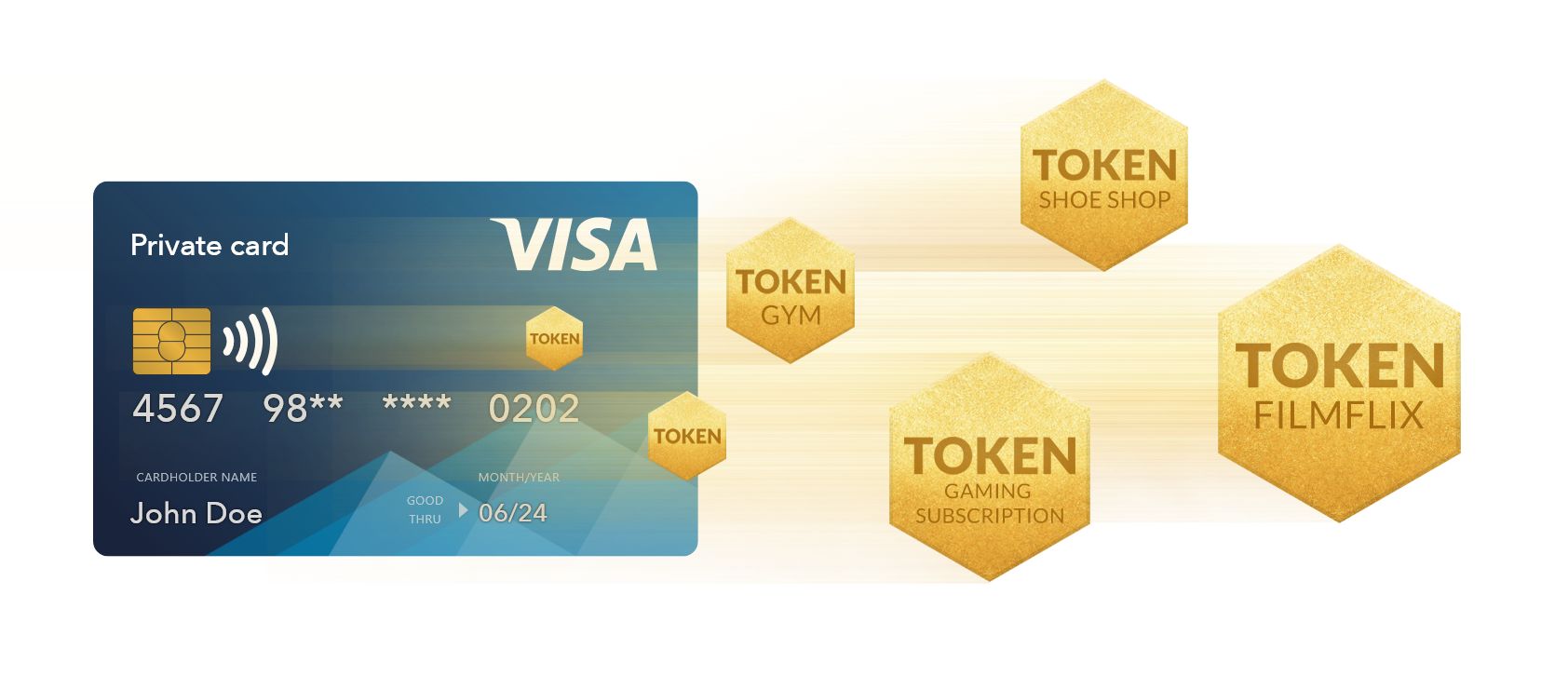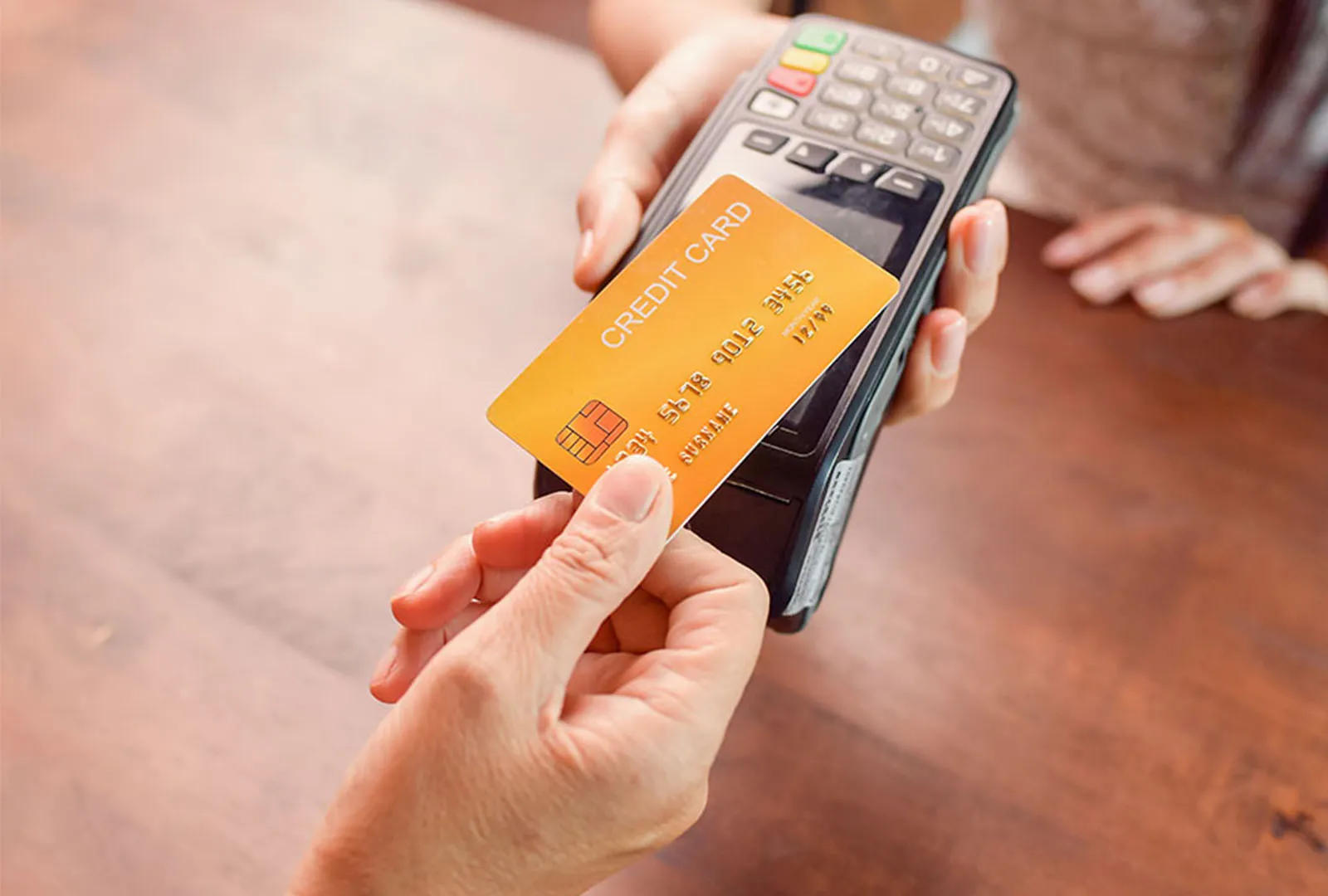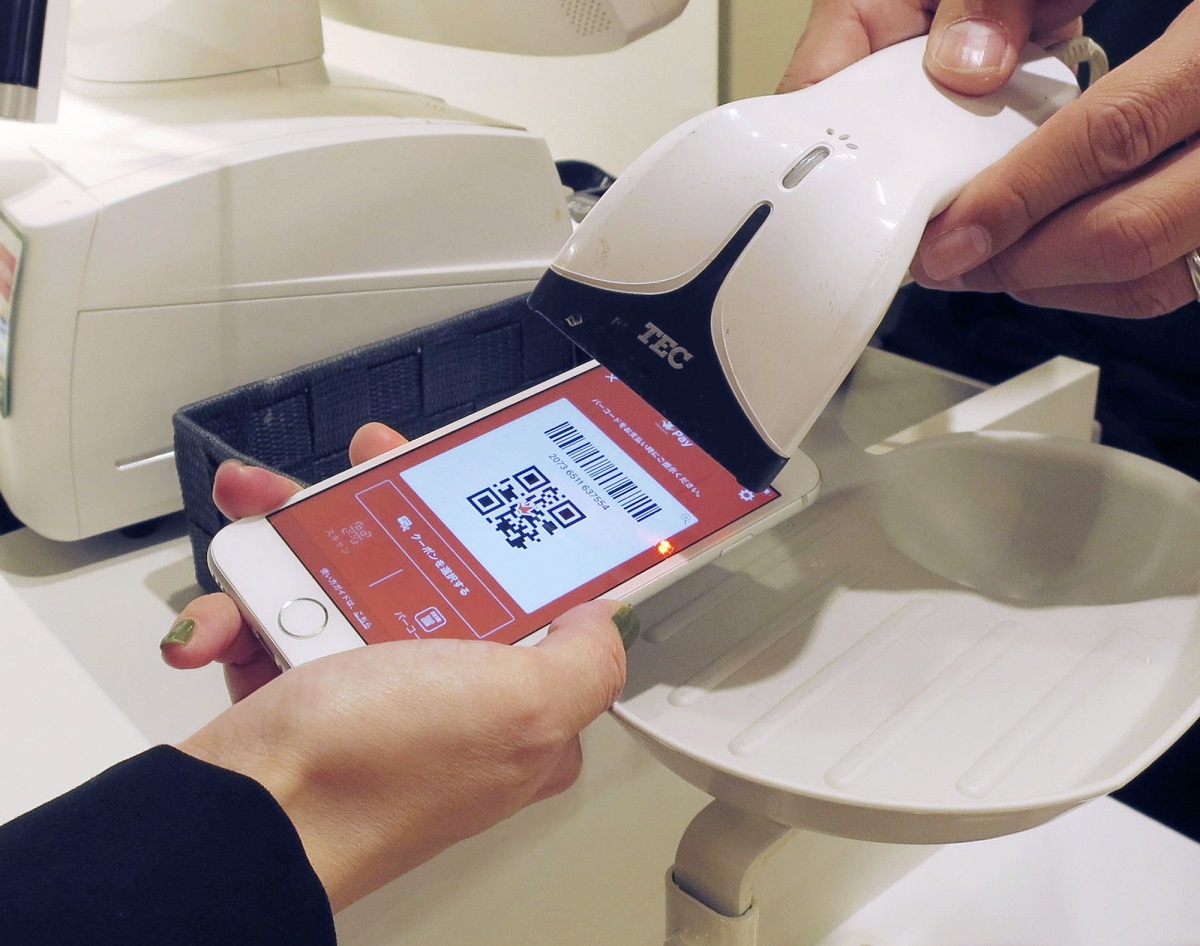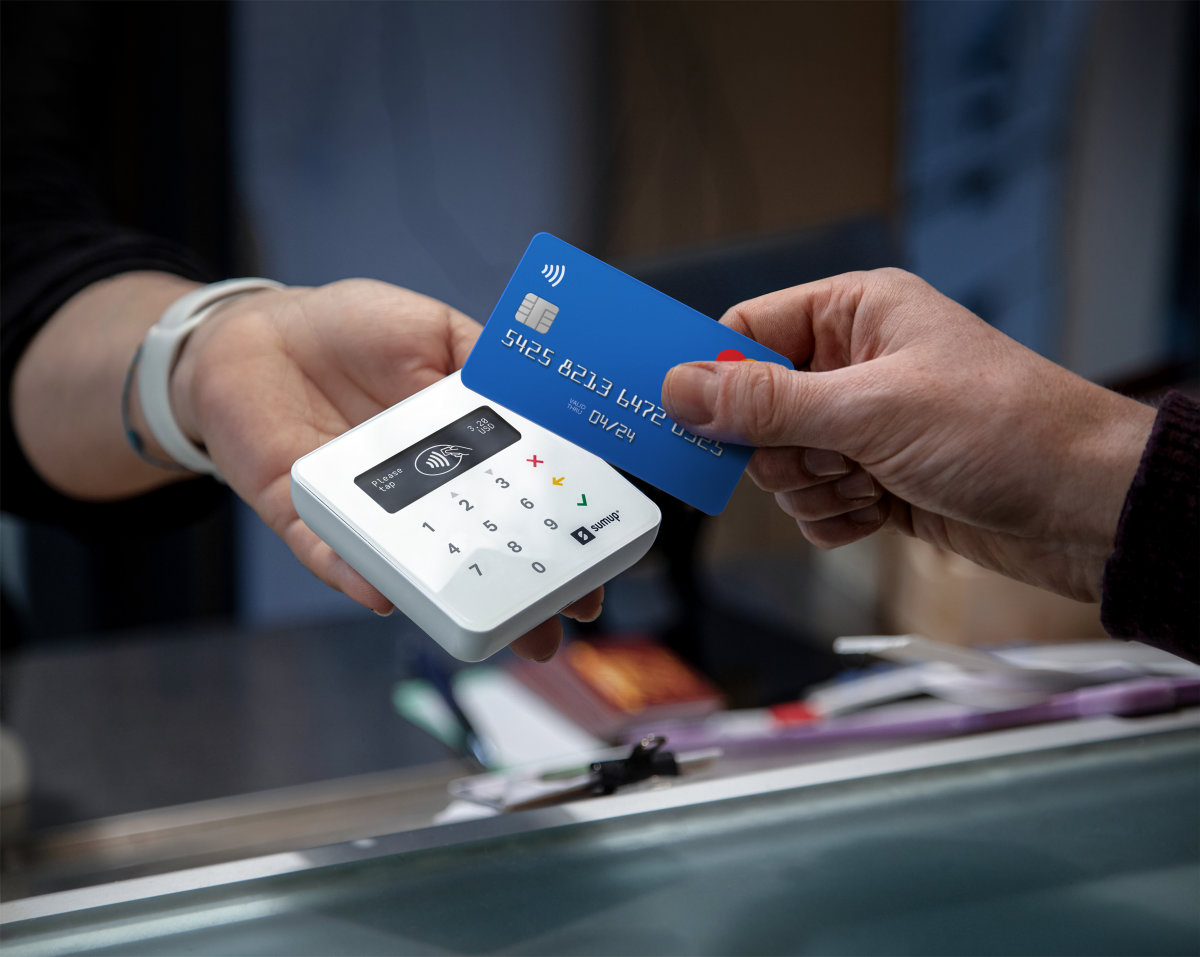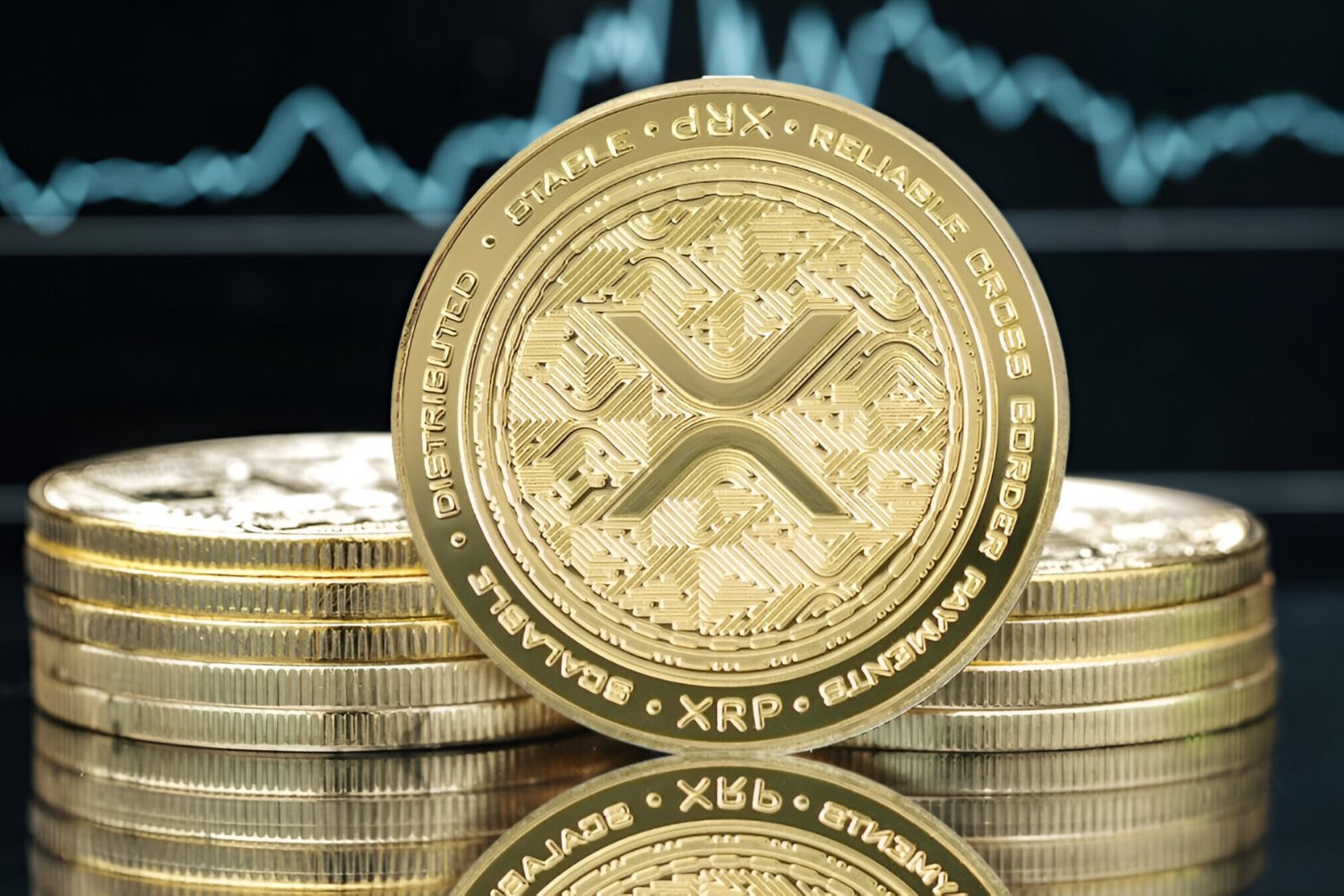What is Visa Tokenization?
Visa tokenization is a revolutionary technology that enhances the security and convenience of digital payments. It replaces sensitive payment information, such as credit card numbers, with a unique digital identifier called a token. This token acts as a stand-in for the actual payment details, safeguarding the customer’s sensitive data in the process.
The tokenization process begins when a customer initiates a payment using their Visa card. Instead of transmitting the card number to the merchant or payment processor, the card details are securely encrypted and sent to Visa’s tokenization platform. Visa then generates a unique token for the transaction.
This token is a randomly generated string of characters that is used to represent the customer’s card. It is worthless to fraudsters, as it cannot be reversed engineered to reveal the original card details. The token is securely stored by the merchant or payment provider, eliminating the need to store sensitive cardholder data.
When a payment is made using the token, it is sent to Visa’s token vault, where it is decrypted and validated. The payment is then authorized and processed, providing a seamless and secure experience for the customer.
This technology is not limited to traditional card-based payments. Visa tokenization can also be used for other forms of digital payments, such as mobile wallets, wearables, and e-commerce transactions. By tokenizing these payment methods, Visa provides a universal and secure solution for a wide range of digital payment scenarios.
Overall, Visa tokenization provides an additional layer of security to protect consumers’ payment information. It ensures that even if a token is intercepted, it cannot be used to extract the original card details, making it virtually useless to fraudsters. With tokenization, consumers can make digital payments with confidence, knowing that their data is protected.
How Does Visa Tokenization Work?
Visa tokenization works by replacing sensitive payment card information with a unique identifier called a token. This process involves several steps to ensure the security and integrity of the transaction.
When a customer initiates a payment using their Visa card, the card information is encrypted and sent to Visa’s tokenization platform. This platform generates a unique token that represents the original card information. It is important to note that the token is not derived from the card number and cannot be reverse engineered to obtain the original card details.
The generated token is then securely transmitted to the merchant or payment provider for storage and subsequent use. The actual card details are not stored by the merchant, reducing the risk of data breaches and theft. Instead, the token serves as a reference to access the necessary information for processing the payment.
When a customer makes a payment using the token, it is securely transmitted to Visa’s token vault. The token is decrypted and validated to ensure its authenticity and integrity. Once validated, the payment is authorized and processed, completing the transaction. Importantly, throughout the entire transaction process, the customer’s sensitive card details remain protected.
Visa tokenization technology also supports dynamic tokens. This means that each token generated can be unique to a specific merchant or payment scenario. If the token is compromised, it cannot be used for any other purpose or transaction outside of the intended scope. This further enhances security and reduces the risk of unauthorized use.
It’s worth noting that Visa tokenization is not limited to a specific payment channel or device. It can be implemented across various digital payment methods, including mobile wallets, wearables, and e-commerce platforms. This versatility allows for seamless, secure, and convenient payment experiences across different platforms and devices.
By employing tokenization, Visa ensures that customer card data is protected throughout the payment process. With tokens replacing sensitive information, the risk of card fraud and data breaches is significantly reduced, providing users with greater peace of mind and confidence in their digital transactions.
Benefits of Visa Tokenization
Visa tokenization offers numerous benefits for both businesses and consumers. By replacing sensitive payment information with secure tokens, it significantly enhances the security and convenience of digital payments.
1. Enhanced Security:
Tokenization ensures that sensitive card details are never exposed during transactions. By using tokens in place of card numbers, the risk of data breaches and fraud is greatly reduced. Even if a token is intercepted, it is practically useless to fraudsters as it cannot be reversed to obtain the original card information.
2. Reduced Risk of Data Breaches:
With tokenization, merchants and payment providers no longer need to store sensitive cardholder data on their systems. This significantly reduces the risks associated with data breaches, as there is no valuable card information to be compromised. It eliminates the lure for hackers, making businesses less attractive targets for cyber attacks.
3. Seamless User Experience:
Tokenization simplifies the payment process for consumers, offering a seamless and convenient experience. Once the token is generated and stored by the merchant or payment provider, customers can make future purchases without having to enter their card information repeatedly. This streamlined process saves time and effort.
4. Universal Compatibility:
Visa tokenization can be implemented across various payment channels and devices, including mobile wallets, wearables, and e-commerce platforms. This compatibility enables users to make secure and convenient payments across different platforms and devices, providing flexibility and choice.
5. Fraud Prevention:
Tokenization plays a vital role in preventing card fraud. By rendering the token useless outside of its intended use, fraudsters face significant hurdles when attempting to exploit stolen tokens. Furthermore, the ability to generate dynamic tokens for each merchant or payment scenario further minimizes the risk of unauthorized use.
6. Trust and Confidence:
Tokenization instills trust and confidence in customers, knowing that their payment information is secured and protected. This trust is critical for businesses, fostering customer loyalty and encouraging repeat purchases.
In summary, Visa tokenization offers a range of benefits, including enhanced security, reduced risk of data breaches, seamless user experience, universal compatibility, fraud prevention, and increased trust and confidence. By leveraging tokenization technology, businesses and consumers can enjoy secure, convenient, and worry-free digital payment experiences.
Enhancing Security and Reducing Fraud with Visa Tokenization
Visa tokenization is a powerful tool that enhances security and reduces the risk of fraud in digital payments. By replacing sensitive card details with tokens, this technology provides a secure and reliable method for processing transactions.
1. Protection against Data Breaches:
One of the main benefits of Visa tokenization is its ability to protect against data breaches. With traditional payment methods, sensitive card information is stored by merchants and payment providers, making them attractive targets for hackers. Tokenization eliminates the need to store this data, reducing the risk of unauthorized access to customer information.
2. Token Uniqueness:
Each token generated through Visa tokenization is unique to a specific transaction or merchant. This adds an extra layer of security, as tokens are worthless for unauthorized use outside of their intended purpose. Even if a token is intercepted, it cannot be exploited to gain access to the original card information, rendering it useless to fraudsters.
3. Dynamic Tokens:
Visa tokenization supports the creation of dynamic tokens that are unique to each transaction. This means that each time a customer makes a purchase, a new token is generated. Dynamic tokens offer an additional level of protection, as they cannot be reused for subsequent transactions. This prevents fraudsters from using obtained tokens for unauthorized transactions.
4. Enhanced Authentication:
Visa tokenization strengthens the authentication process by replacing static card numbers with tokens. As tokens are random and unrelated to the original card details, they provide an extra layer of protection against unauthorized use. This reduces the likelihood of fraudulent transactions and increases the confidence of both businesses and consumers in digital payment systems.
5. Fraud Detection and Prevention:
By utilizing tokenization, Visa has developed sophisticated fraud detection and prevention systems. These systems can analyze patterns and behaviors associated with tokens to identify suspicious activity. If any fraudulent activity is detected, the transaction can be flagged and declined, reducing the impact of fraudulent transactions on businesses and consumers.
Overall, Visa tokenization significantly enhances security and reduces the risk of fraud in digital payments. By replacing sensitive card details with unique tokens, this technology offers protection against data breaches, supports dynamic tokens, strengthens authentication measures, and enables effective fraud detection and prevention. With Visa tokenization, businesses and consumers can have peace of mind knowing that their payment information is secure and well-protected.
How Visa Tokenization Simplifies Digital Payments
Visa tokenization simplifies digital payments by offering a secure and convenient method for both businesses and consumers. This technology streamlines the payment process, reduces friction, and provides a seamless experience across various payment channels and devices.
1. Streamlined Checkout Process:
With Visa tokenization, customers no longer need to enter their card details repeatedly for each digital payment. Once the token is generated and securely stored by the merchant or payment provider, customers can simply select the saved token for future transactions. This eliminates the need for manual data entry, saving time and effort during the checkout process.
2. One-Click Payments:
Visa tokenization enables one-click payments, allowing customers to make quick and hassle-free purchases. With tokens securely stored and seamlessly integrated into the payment process, customers can complete transactions with just a single click or tap. This frictionless experience improves customer satisfaction and encourages repeat purchases.
3. Improved Mobile and In-App Payments:
Mobile wallets and in-app payments are becoming increasingly popular, and Visa tokenization simplifies these payment methods. By storing tokens within the digital wallet or app, customers can make payments with ease, eliminating the need to manually enter card details. This convenience enhances the mobile payment experience and drives adoption of these digital payment options.
4. Universal Compatibility:
Visa tokenization is compatible with various payment channels and devices, making it widely accessible and adaptable. Whether customers prefer to pay using their mobile devices, wearables, or desktop computers, tokenized payments can be seamlessly integrated across all these platforms. This universality ensures a consistent and simplified payment experience regardless of the chosen device.
5. Reduced Shopping Cart Abandonment:
The lengthy and cumbersome checkout process often contributes to shopping cart abandonment. However, Visa tokenization reduces the friction associated with manual data entry, thus minimizing the likelihood of customers abandoning their shopping carts. By simplifying the payment process, businesses can enhance conversion rates and improve overall customer satisfaction.
6. Increased Trust and Confidence:
Visa tokenization instills trust and confidence in customers by providing a secure payment method. With their sensitive card details protected and replaced by tokens, customers can feel at ease knowing that their information is safeguarded against fraud and data breaches. This increased trust can lead to stronger customer loyalty and repeat business.
In summary, Visa tokenization simplifies digital payments by streamlining the checkout process, enabling one-click payments, improving mobile and in-app payments, offering universal compatibility, reducing shopping cart abandonment, and enhancing trust and confidence. With its convenience and security, Visa tokenization helps businesses provide a seamless and user-friendly payment experience while ensuring the utmost protection for customer data.
Implementing Visa Tokenization: Best Practices
Implementing Visa tokenization requires careful planning and adherence to best practices to ensure a smooth and secure integration. Consider the following guidelines when implementing Visa tokenization:
1. Partner with a Trusted Payment Service Provider:
Work with a reputable payment service provider (PSP) that offers Visa tokenization services. Choose a provider with a proven track record in handling secure payment transactions and who can guide you through the implementation process.
2. Ensure Compliance with PCI DSS:
Comply with the Payment Card Industry Data Security Standard (PCI DSS) guidelines to ensure the secure handling of cardholder data. Tokenization can help simplify PCI compliance by reducing the scope of sensitive data storage. Regularly assess and validate your compliance to maintain a secure environment.
3. Secure Token Storage and Transmission:
Implement robust security measures to protect the storage and transmission of tokens. Encrypt tokens where they are stored and during transmission to ensure they remain secure and inaccessible to unauthorized individuals or systems.
4. Educate Employees and Customers:
Educate your employees and customers about the benefits and security of Visa tokenization. Train your staff on how to handle tokenized payments securely, and educate your customers on the advantages of tokenization and how it protects their sensitive information.
5. Regularly Monitor and Update Systems:
Regularly monitor your systems for any signs of suspicious activity or attempted breaches. Keep all software and hardware up to date with the latest security patches and updates to minimize vulnerabilities and ensure the ongoing security of your tokenization implementation.
6. Conduct Regular Security Audits:
Perform regular security audits to assess the effectiveness of your tokenization implementation. This will help identify any potential vulnerabilities or areas for improvement and allow you to take proactive steps to enhance the security of your payment systems.
7. Stay Informed of Industry Changes:
Stay up to date with the latest trends, technologies, and regulations in the payment industry. This will help you adapt your tokenization implementation to meet changing security requirements and industry standards.
By following these best practices, you can ensure a successful implementation of Visa tokenization. Remember to prioritize security, compliance, and ongoing monitoring to protect sensitive data and provide a seamless and secure payment experience for your customers.
Future Trends in Visa Tokenization
Visa tokenization has already revolutionized the security and convenience of digital payments, but its evolution does not stop there. Several exciting future trends are shaping the direction of Visa tokenization and the broader payment landscape:
1. Biometric Authentication:
Biometric authentication, such as fingerprint or facial recognition, is gaining traction as a secure and convenient method of verifying a user’s identity. In the future, Visa tokenization could integrate biometric technology to authenticate transactions, further enhancing security and simplifying the payment process.
2. Internet of Things (IoT) Integration:
With the growing prevalence of connected devices, Visa tokenization is expected to expand its reach into the Internet of Things (IoT). This means tokenizing payment information for devices such as smart home appliances, wearables, and even connected vehicles, enabling seamless and secure transactions in various IoT ecosystems.
3. Enhanced Tokenization Standards:
As the adoption of tokenization increases, industry standards for tokenization will continue to evolve. Visa and other payment networks are likely to enhance the tokenization standards to address new security threats and ensure interoperability across different payment platforms and devices.
4. Tokenization in Open Banking:
With the rise of open banking, where third-party applications and services can access customer financial data, tokenization will play a crucial role in securing these transactions. By tokenizing the sensitive information shared with these applications, customers can have confidence that their data is protected, and unauthorized access is mitigated.
5. Integration with Blockchain Technology:
Visa tokenization could also explore integrating with blockchain technology to provide an additional layer of security and transparency. By leveraging blockchain’s decentralized nature and cryptographic algorithms, tokenization can be further enhanced by enhancing data integrity and reducing the risk of data tampering.
6. Advanced Fraud Detection:
As data analytics and machine learning capabilities continue to advance, Visa tokenization is likely to leverage these technologies to develop more sophisticated fraud detection and prevention systems. By constantly analyzing transaction patterns and detecting anomalies, tokenization can provide real-time alerts for suspicious activities, further enhancing overall payment security.
These future trends demonstrate the ongoing evolution of Visa tokenization and its impact on the digital payment landscape. As technology advances and new security challenges emerge, Visa and other payment networks will continue to innovate and enhance tokenization to provide even more secure, convenient, and user-friendly payment solutions.
Conclusion
Visa tokenization has emerged as a game-changing technology in digital payments, offering enhanced security and streamlined convenience for businesses and consumers alike. By replacing sensitive card information with unique tokens, Visa tokenization protects against data breaches, reduces the risk of fraudulent transactions, and simplifies the payment process.
The benefits of Visa tokenization are wide-ranging. From reducing the likelihood of data breaches and fraud to providing a seamless user experience, this technology has transformed the way digital payments are conducted. With secure token storage and transmission, dynamic tokens, and compatibility across various payment channels and devices, Visa tokenization offers a universal and trusted solution for consumers and merchants.
It is essential for businesses to follow best practices when implementing Visa tokenization. By partnering with trusted payment service providers, complying with PCI DSS guidelines, educating employees and customers, and monitoring and updating systems regularly, businesses can ensure a secure and successful tokenization deployment.
The future of Visa tokenization holds exciting possibilities. Biometric authentication, integration with IoT devices, advanced tokenization standards, and leveraging blockchain technology are among the trends that will shape the future of this technology. As the payment landscape evolves, Visa and other payment networks will continue to innovate, ensuring that tokenization remains at the forefront of secure and convenient digital payments.
In conclusion, Visa tokenization has revolutionized the way we conduct digital payments. With its ability to enhance security, simplify the payment process, and provide a seamless user experience, Visa tokenization is driving the shift towards secure and convenient digital transactions. Adopting best practices and keeping up with future trends will enable businesses and consumers to leverage the full potential of Visa tokenization, ensuring secure and hassle-free transactions in the ever-evolving digital payment landscape.







